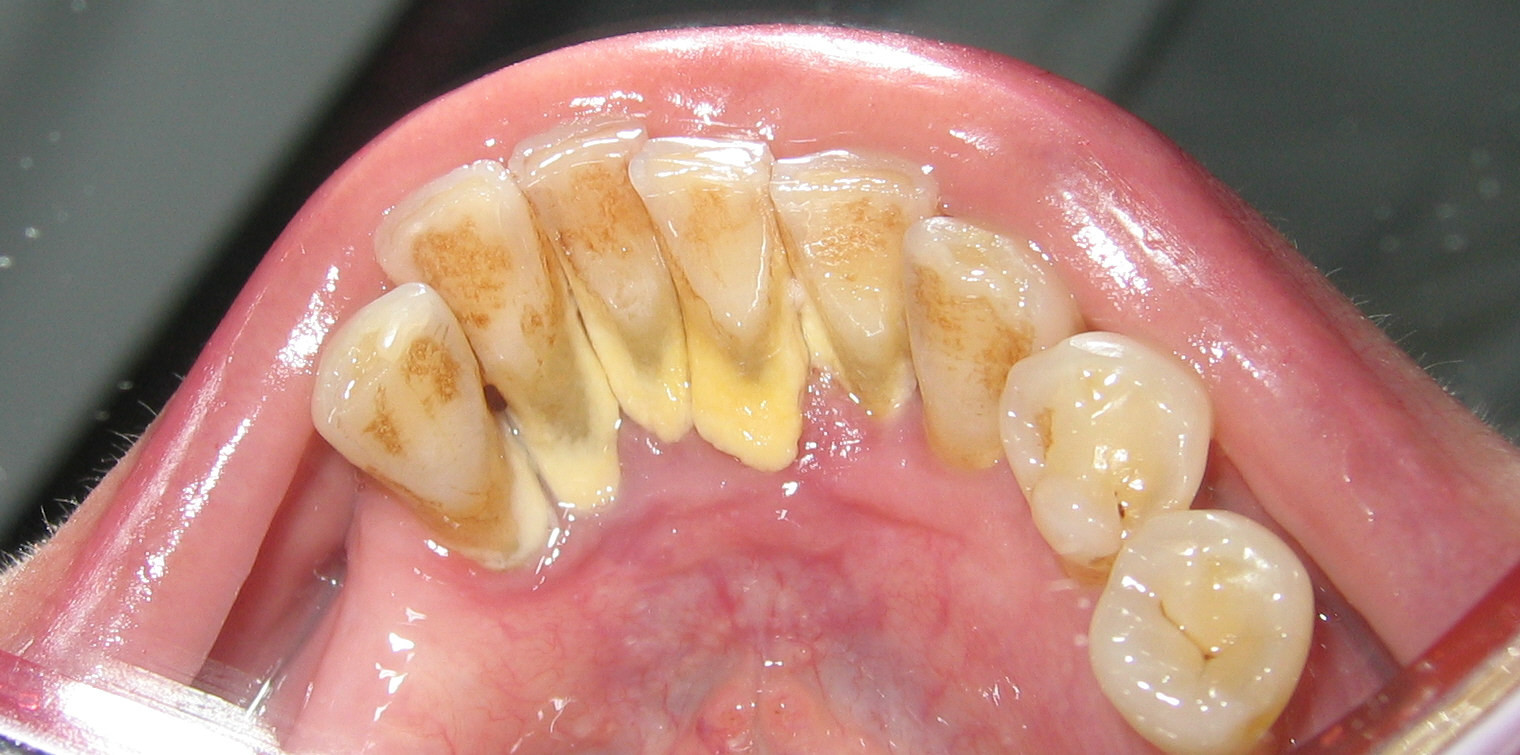Definisi
Avulsi gigi adalah gigi yang terlepas sepenuhnya dari soketnya. Kondisi ini biasanya terjadi akibat benturan, baik saat olahraga maupun kecelakaan. Avulsi gigi umumnya diderita oleh anak-anak. Namun, tidak menutup kemungkinan avulsi gigi juga diderita oleh orang dewasa.
Untuk mencegah kehilangan gigi secara permanen, gigi yang copot harus segera dipasang kembali. Pemasangan gigi harus dilakukan dalam waktu 30 hingga 60 menit setelah lepas.
Baca Juga: Gigi Sensitif - Definisi, Penyebab, Gejala, dan Pengobatannya
Penyebab
Penyebab utama gigi avulsi yaitu trauma fisik akibat penyakit atau cedera saat berolahraga dan kecelakaan.
Avulsi gigi dapat disebabkan oleh beberapa situasi berikut, antara lain:
- Jatuh dengan posisi mulut terbentur ke tanah atau benda keras
- Kecelakaan lalu lintas
- Cedera pada bagian mulut, akibat olahraga contohnya, sepak bola dan MMA
- Tindak kekerasan yang dilakukan orang lain
Faktor Risiko
Faktor risiko pada gigi avulsi adalah anak-anak.
Gejala
Gejala avulsi gigi yaitu ketika gigi benar-benar copot dari mulut. Kondisi ini menyisakan ruang kosong pada tempat gigi yang terpasang sebelumnya.
Selain itu, beberapa gejala lain mungkin juga akan muncul, di antaranya:
- Pendarahan dan pembengkakan
- Jika avulsi disebabkan oleh benturan, gejala seperti luka di pipi dan bibir akan timbul
- Pembengkakan pada sekitar gigi yang lepas
- Pendarahan pada sekitar gigi yang lepas
- Rasa sakit pada mulut
- Rasa nyeri disekitar gigi dan rahang, rasa nyeri dapat timbul pada saat mengunyah atau ketika terjadi perubahan suhu
- Kepala terasa sakit (jika terjadi cedera di kepala)
Diagnosis
Dalam mendiagnosis avulsi gigi dokter bertanya mengenai riwayat kesehatan dan gejala yang dirasakan.Setelah itu, dokter akan melakukan pemeriksaan fisik guna melihat kondisi rongga mulut serta soket dan gigi yang lepas.
Selanjutnya, dokter akan menentukan langkah penanganan yang sesuai dengan kondisi yang anda alami. Apabila memungkinkan, gigi yang lepas akan segera dipasang kembali.
Baca Juga: Tumor Rongga Mulut - Definisi, Penyebab, Gejala, dan Pengobatannya
Tata Laksana
Gigi akan lebih mudah terpasang kembali bila penanganannya tidak ditunda-tunda. Oleh karena itu, Anda sebaiknya langsung melakukan pertolongan pertama setelah mengalami kejadian tersebut.
Ketika gigi lepas akibat benturan keras, ikuti langkah berikut.
- Setelah lepas ambil gigi dan segera dibersihkan.
- Saat menambil, hanya memegang bagian mahkotanya. Jangan menyentuh akar gigi karena bisa menghilangkan jaringan ikat periodontal yang berguna untuk membantu penyembuhan.
- Bersihkan gigi dari kotoran dengan susu, tanpa digosok, lalu dikeringkan, atau diberi sabun.
- Setelah bersih, tempatkan kembali gigi ke dalam soket secara
- Setelah terpasang, gigit kain kasa atau sapu tangan selama 15 hingga 20 menit untuk mempertahankan posisinya.
- Segera pergi ke dokter gigi untuk mendapatkan penanganan lebih lanjut. Pastikan Anda ke dokter gigi kurang dari satu jam setelah gigi lepas.
Biasanya, dokter akan memeriksa apakah posisi gigi sudah terpasang dengan benar. Jika benar, sisi gigi yang copot akan disekat dengan gigi sekitarnya memakai teknik splinting.
Dalam dua minggu, dokter akan melakukan evaluasi. Apabila tulang di sekitar gigi Anda juga retak, hasil splinting mungkin akan dibiarkan lebih lama setidaknya sekitar enam minggu.
Splinting adalah suatu perawatan di mana gigi yang terlepas akan diikatkan menggunakan bahan dari Blu-tac atau aluminium foil dengan gigi-gigi di sebelahnya yang masih kuat. Langkah ini bertujuan menahan posisi gigi yang sempat copot selama masa penyembuhan.
Komplikasi
Jika tidak segera ditangani, avulsi dapat membuat gigi tanggal secara permanen. Gigi yang telah dipasang kembali pun juga berisiko mengalami komplikasi.
Beberapa komplikasi yang mungkin terjadi, di antaranya:
- Nekrosis pulpa: kematian jaringan pada lapisan paling dalam gigi (pulpa)
- Ankylosis: kondisi di mana gigi yang dipasang kembali masuk tenggelam ke dalam jaringan gus
- Periodontitis apikal: peradangan pada jaringan di sekitar gigi
- Peradangan akar gigi: kerusakan pada stuktur akar gigi yang membuatnya terasa kendur atau longgar
- Pulp canal obliteration (PCO): munculnya deposit jaringan keras di sepanjang dinding saluran akar
Jika Anda ingin membaca selengkapnya mengenai periodontitis, Anda dapat membacanya di sini: Periodontitis - Definisi, Penyebab, Gejala, dan Pengobatannya
Pencegahan
Avulsi sering terjadi karena cedera atau kecelakaan saat berolahraga. Untuk mencegahnya, sebisa mungkin menghindari cedera dan kecelakaan. Anda dapat menggunakan pelindung kepala dan wajah setiap kali berolahraga.
Anda juga bisa menggunakan pelindung gigi (mouth guard). Pertimbangkan untuk mendapatkan pelindung mulut yang dibuat khusus oleh dokter gigi, Supaya bentuk pelindung mulut akan disesuaikan dengan kondisi dan struktur gigi Anda.
Beberapa edukasi yang perlu dijelaskan pada pasien terkait manajemen replantasi pada avulsi gigi, antara lain:
- Tidak ada jaminan keberhasilan, terutama pada gigi yang tidak ditempatkan dalam medium selama lebih dari satu jam
- Edukasi mengenai risiko infeksi dan perlunya antibiotik sistemik
- Gigi yang dipasang kembali memiliki risiko tanggal atau goyang yang lebih besar daripada gigi normal
- Setelah dipasang kembali, pasien perlu kontrol rutin ke dokter gigi untuk tindakan selanjutnya dan evaluasi
- Pasien harus menghindari olahraga dengan kontak fisik
- Pasien harus diet lunak selama sekitar 2 minggu
- Sikat gigi harus menggunakan sikat yang lembut setiap sehabis makan
- Kumur dengan chlorhexidine 0,1% dua kali sehari selama seminggu
Kapan Harus ke Dokter?
Hubungi dokter bila Anda mengalami gejala yang mengarah pada gigi avulsi. Demikian pula jika Anda mengalami tanda atau gejala lain yang tidak disebutkan maupun masalah serta pertanyaan lainnya.
Mau tahu informasi seputar penyakit lainnya? Cek di sini, ya!
- dr. Monica Salim
American Association of Endodontists. Retrieved 8 Januari 2023, from
https://www.aae.org/patients/dental-symptoms/knocked-out-teeth/
Cleveland Clinic Retrieved 8 Januari 2023, from
https://health.clevelandclinic.org/must-act-fast-tooth-gets-knocked/
Life in the Fastlane. Retrieved 8 Januari 2023, from











